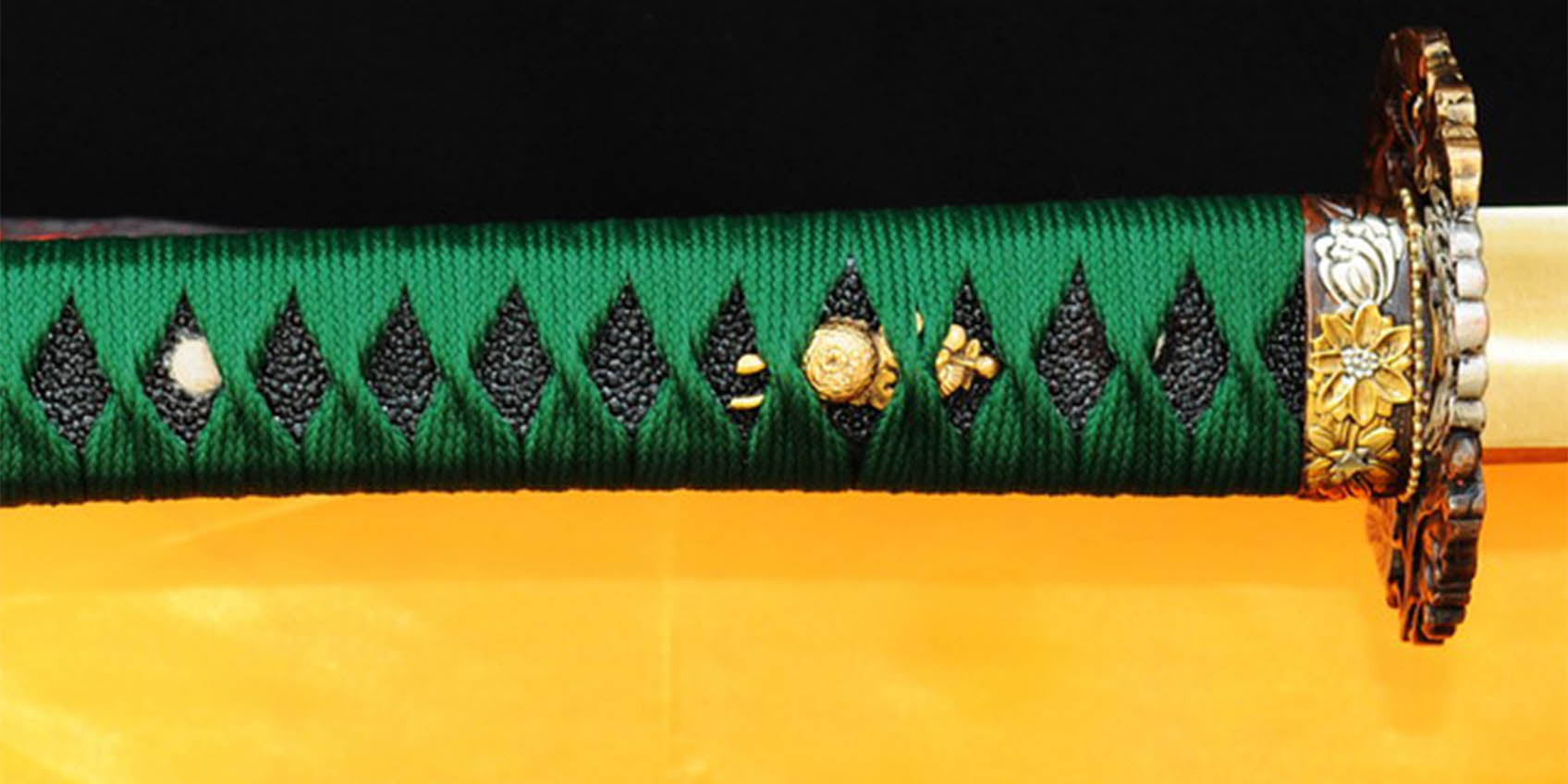Custom sword: Tsukamaki (ITO) Essence

Crafting the Samurai Sword: Tsukamaki (ITO) Essence
Japanese swords are renowned worldwide for their exquisite craftsmanship and profound cultural significance. Among the many intricate aspects of these weapons, the tsukamaki (柄巻), or the wrapping of the sword handle, stands out as a unique blend of artistry and functionality. This article delves into the meaning, types, and process of tsukamaki, as well as the essence of customizing a samurai sword, guiding you into this ancient and mysterious Japanese tradition.
The Role and Historical Background of Tsukamaki
Tsukamaki refers to the cord or leather wrapping around the handle of a Japanese sword. Its purpose extends far beyond mere decoration. Firstly, tsukamaki enhances grip comfort and stability, allowing the wielder to use the sword with greater ease and precision. Secondly, it prevents the handle from slipping due to moisture or sweat, thereby improving operational safety and efficiency.

Historically, tsukamaki appeared on ancient Japanese swords not only to reinforce the handle but also as a symbol of status and ornamentation. Over time, the styles and materials of tsukamaki have evolved, showcasing various aesthetic styles and techniques such as hiramaki (平巻), hishimaki (菱巻), and niremaki (捻巻). Each wrapping style presents a different artistic approach and manufacturing skill.
- Hiramaki: Maintains the original width of the handle cord, avoiding protrusions from overlapping parts, thus keeping the wrap flat and often used in ‘Itomaki Tachi Koshirae.’ It emphasizes the texture and color of the handle cord with a simple and neat appearance.

- Hishimaki: Features a diamond-shaped pattern formed by the crisscross wrapping of the handle cord, enhancing both aesthetics and grip stability.

- Katatemaki: A spiral wrapping method that is straightforward, ideal for swords designed for light and agile operation.

- Tsumamimaki: Creates a raised effect by pinching the overlapping parts of the handle cord, enhancing both anti-slip properties and elegant appearance.

- Niremaki: Involves a half-twist in the overlapping parts of the handle cord, adding complexity and personalized design.

- Jabarimaki: Forms a snakeskin pattern through intricate thin cord weaving, used for delicate and complex decorations.

- Kakemaki: Secures the handle cord directly to the handle's end, enhancing structural stability, suitable for combat swords.

Materials and Craftsmanship of Tsukamaki
The materials used for tsukamaki include silk, pure cotton, synthetic fibers, cowhide, and deerskin, each with unique characteristics and uses. For instance, silk is favored for high-end tsukamaki due to its softness and excellent shape retention, though it is pricier and more susceptible to contamination. Cowhide and deerskin, on the other hand, are valued for their durability and premium feel, commonly used in Iaido (Japanese swordsmanship).
Creating tsukamaki is not merely a simple wrapping process but involves special treatments such as starching and flattening the cord to ensure its stability and aesthetic appeal. Tsukamakishi (柄巻師), or tsukamaki craftsmen, possess extensive experience and skills, enabling them to customize designs according to the client's specific requirements.
forging a sword by hand
In the process of customizing a samurai sword, tsukamaki plays a crucial role, not merely as a decorative element but as an indispensable part of the overall design. By selecting different materials and wrapping styles, a custom samurai sword can be imbued with unique personality and style, reflecting the owner's taste and status.
The value of a custom samurai sword lies not only in its superb craftsmanship and material selection but also in the cultural and historical significance it embodies. Each custom sword is a unique work of art, showcasing the meticulous craftsmanship and enduring spirit of the swordsmith.
Conclusion
As an integral part of katana culture, tsukamaki is not just a testament to functionality but also a crystallization of art and culture. By understanding the meaning, types, and process of tsukamaki, we can better appreciate and comprehend this ancient and beautiful art form.
When choosing to customize a cool katana or exploring the culture of katana, tsukamaki, as an indispensable element, will bring you a unique visual and experiential enjoyment. Welcome to delve deeper into and experience this exquisite craft with rich historical heritage!
Our shop offers a wide range of customized services

At some events, fans demonstrate their swordsmanship skills, paying tribute to anime's legendary battles. Conventions even hold swordsmanship competitions, letting enthusiasts showcase their passion and creativity with these iconic weapons. Certain anime weapons hold special significance for fans, influencing anime swordsmanship and sparking interest in related merchandise. Celebrations at various anime events further boost their popularity. These weapons symbolize strength and courage, leaving a lasting mark on the anime world.

